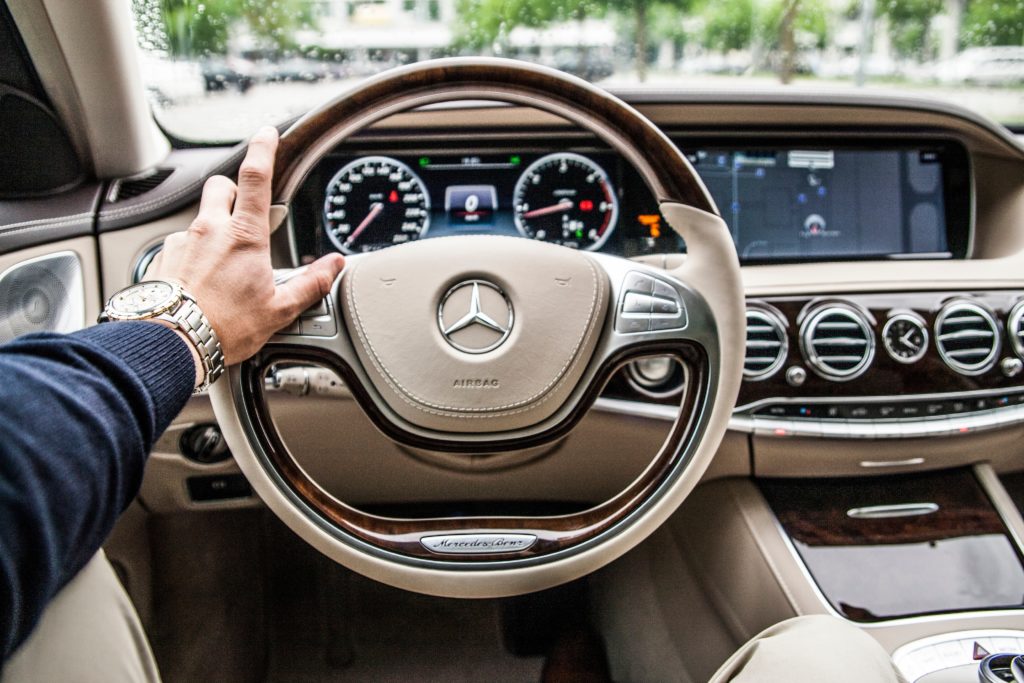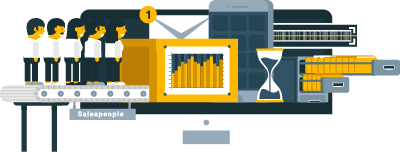Talk to Sales: (401) 200-6026
 A robust sales spiff program may be just what your dealership needs to light a fire under your salespeople
A robust sales spiff program may be just what your dealership needs to light a fire under your salespeople
You’re planning your weekly sales meeting, and you’re having trouble wrapping your head around the numbers. Your team just hasn’t been closing enough deals lately, and you’re not sure what’s going on.
When meeting day rolls around, though, you suddenly have a clearer picture as you look around the table. Your salespeople are physically present, but they look tired and mentally drained; there’s no “spark.” They’re in need of some serious motivation.
Motivation for auto salespeople can take a few different forms, but one prominent method is creating a sales spiff program.
What is a sales spiff program?
Maybe you’ve heard of a sales spiff program before — or maybe you haven’t under that exact name. Either way, spiffs are short-term incentives based on a particular focus of your choosing. Salespeople earn bonuses — usually cash — for achieving specific goals that you’ve set. This is a widely accepted way in the auto industry to boost morale and encourage some friendly competition among your team.
Dealerships can use spiffs in many different ways. For example, if you have a 2007 Ford Explorer that’s been sitting on your lot for 30 days, tell your team that the first person to sell it will get an extra $50, in addition to their standard commission. You can offer spiffs for the most car sales in a day, for each positive review posted online, or for each new car sold. It’s up to you.
Tips for establishing your dealership’s sales spiff program
There’s not one catch-all template for a sales spiff program, so what you ultimately decide to do should serve your dealership’s unique interests. There are some tips, however, to keep in mind as you work to motivate your sales team.
Spiffs shouldn’t be too frequent or too long
Spiffs are meant to inspire your team to try harder, but in essence, isn’t that the point of commission too? You assume they’ll work their very hardest to make sales because they want as much commission as possible, and then you’re surprised when your numbers are down. It’s because the commission is just part of their everyday job — and that gets tedious for everyone sometimes. If you have too many spiffs or spiffs that last too long, they’re not going to be special anymore, and that urge to compete will disappear. You should have spiffs every once in a while for short bursts of time, so they always hold their appeal.
Have an expected ROI in mind
It may be tempting to create a spiff on a whim when you walk into the dealership and see far too much inventory sitting there. Fight the urge to blurt out, “ The first person to sell three cars today gets a $200 spiff!” Instead, brainstorm specific areas of your dealership that you feel could use a boost. Then, set a budget that makes sense and create the desired ROI you hope to achieve. After all, you’re not selling cars because it’s all fun and games — you’re a business, and you need to make money. If you’re creating spiffs that don’t make you money, there’s no point.
Sync spiffs with advertising campaigns
You may get good results on a spiff, but you have the potential to see great results if you create an advertising campaign around one. For example, trying to sell a particular vehicle to any customer that walks in the door can be challenging. However, if an ad campaign brings in a qualified customer who’s already interested in that vehicle? Well, that’s a grand slam.
“A spiff program works when used in tandem with an advertising campaign. A tire sales advertising campaign, for instance, pulls tire-buying customers into the dealership,” said Sean Ugrin, founder and CEO of Spiffit, to Auto Dealer Today. “It incentivizes advisors to sell tires and helps close more opportunities.”
Ugrin also mentioned a case study when speaking with Auto Dealer Today. He offered the story of a Toyota dealer who sold 81 tires in the month of February. In March, they added an automated, recurring 30-day spiff program and increased sales to the point where they were able to sell 304 tires in June.
Make sure someone is in charge of tracking spiffs
It’s fun to create spiffs and tell excited employees they’re going to win money, but you also have to deliver on your promises. Sometimes, between your dealership, automakers, and vendors, you may have a few spiffs going on at once. It can be easy to lose track of who is owed what, and when. Putting someone in charge of the tracking and paying of spiffs is an easy to way to combat any potential mix-ups.
Get creative with ideas
As time goes on, you may feel the need to get more creative with your spiffs. If you’re having trouble thinking of new ideas, hold a few brainstorming sessions during your sales meetings and get your team to participate. One dealership in Florida, Rick Case Fiat, put a fun spin on an old sales spiff called a pull-board. There’s a board covered in envelopes, filled with different amounts of money, and every time a salesperson meets a goal, they can pull an envelope down. Rick Case Fiat swapped out envelopes for balloons, and every sales person who met a goal got to throw a dart at a balloon.
A sales spiff program can be just what your dealership needs to motivate salespeople, increase sales, and boost morale. Just take your time crafting a program that makes sense (and makes you money), and you’ll undoubtedly see great returns.
Interested in an Affordable, Full-Featured Auto Dealer CRM?
Schedule an AutoRaptor Demo Now!





